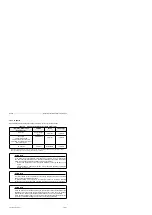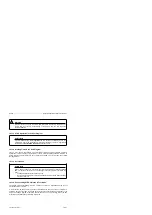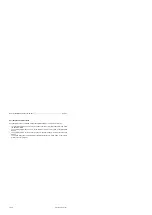
S5-95F
Rules for Failsafe Operation of an S5-95F
!
Warning
Note that you may only use the system data bytes listed in Table 6.6. Improper use of
system data may result in malfunctioning of the S5-95F, and can thus impair the
system's failsafety.
18.13.3 STOP Operation in the User Program
Safety Note
A STOP initiated by the
”STP” operation can very easily be cancelled by means of a
programmer input (even inadvertently). A STOP produced by the ”STP” operation is
therefore
not a failsafe STOP condition (see section 18.16).
18.13.4 Waiting Times in the User Program
Timers T 0 to T 127 are non-retentive. If a power failure occurs while a timer containing a minimum
waiting time is still running, the user program must see to it that this waiting period is maintained. To
do this, store the pertinent information on the minimum waiting time in a retentive flag, and evaluate
that flag in OB22.
18.13.5 Scratchpad
Safety Note
Flags F 200.0 to F255.7 are reserved for the internal programming of loadable standard
FBs. For reasons of safety, the use of these flags in the user program is permitted only
when
•
no loadable standard function blocks are used
•
the flag area is saved prior to invoking a loadable standard FB and loaded following
execution of that FB
18.13.6 Post-Loading STEP 5 Blocks in Test Mode
The S5-95F permits post-loading of STEP 5 blocks in Test mode. Post-loaded blocks are not
processed until the next cycle.
In order that the S5-95F be able to process post-loaded blocks, they must first be compiled, i.e.
translated. The amount of time the S5-95F needs to translate a post-loaded block depends on the
length of the STEP 5 program in that block, and can be as much as 3 s. Exceeding of the cycle time
is therefore a possibility when post-loading long blocks.
EWA 4NEB 812 6210-02
18-27
















































